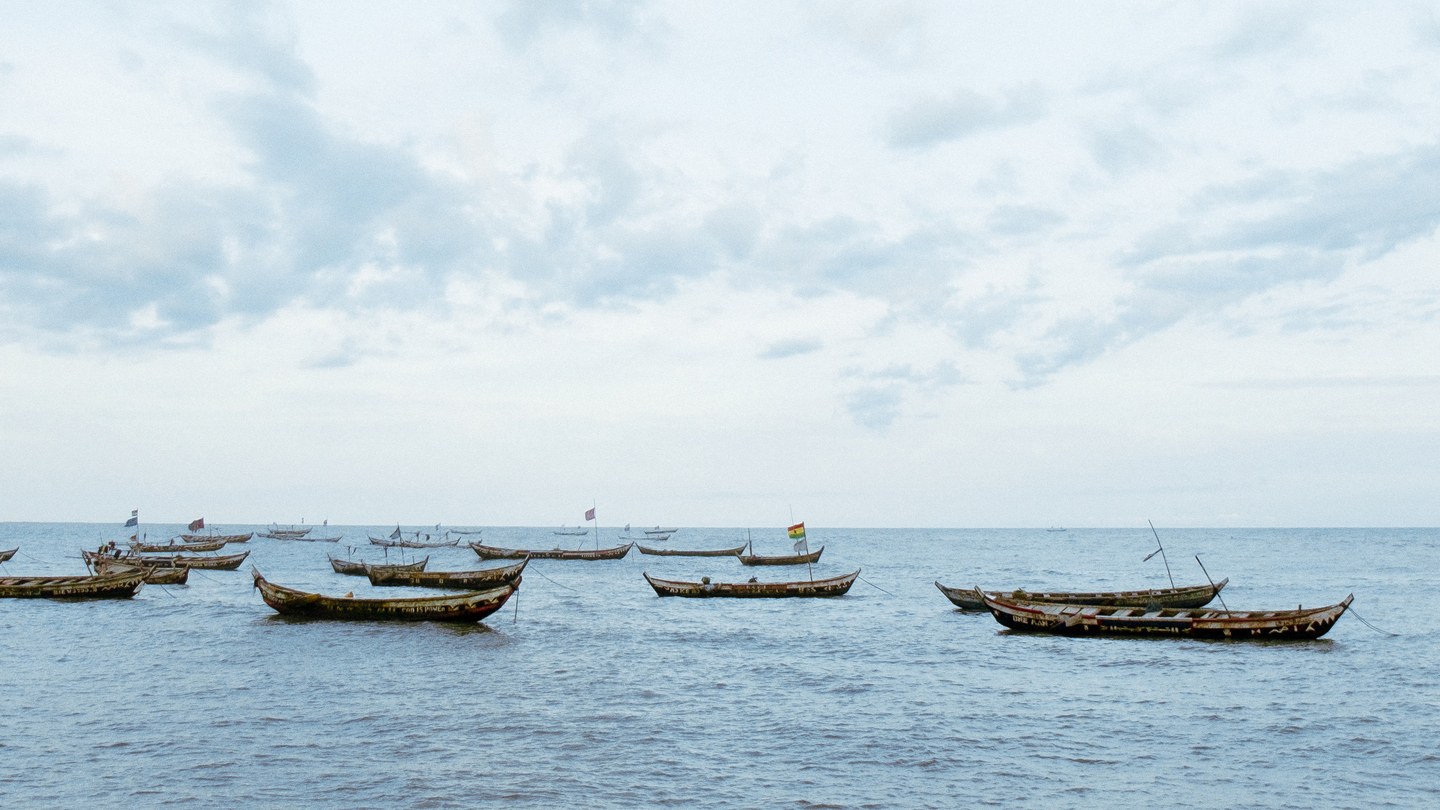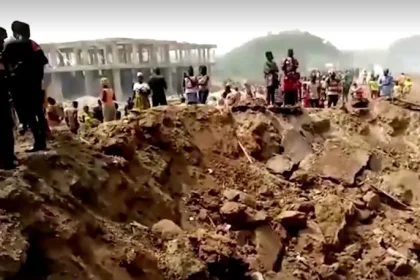“I typically don’t take staged images,” says Accra–based photographer Jessica Sarkodie.
“My focus is on people and stories that are often underrepresented, so I really try to capture things as they are.”
The 25-year-old photographer has a practiced eye when it comes to discovering the remarkable in the quotidian.
Much of her tender, vibrant work explores the nuances of everyday life in her native Ghana, where she returned to in June 2016 after attending college in the United States.
Sarkodie credits her time abroad with a sharpened perspective of her homeland, and more broadly, with strengthened powers of observation.
“When I made that transition back, I noticed a lot of things that I overlooked because I’d always had it around me,” she says.
“Returning to Ghana made things stand out to me in a way that they hadn’t before.” That heightened perception manifests itself in shots of the country’s unspoiled beaches, where even footprints in the sand feel like novelty, and in photos of the many working fishermen, who act as synecdoche for the country’s coastal setting.
“Oftentimes, what regular people are doing seems so mundane that it goes unnoticed. I just try to be attentive to that,” says Sarkodie.
We asked her to guide us through the below photographs, which tap into just that—Ghana’s quieter, oft-unseen corners—for a rich, real view of the country.

Maranatha Beach, Ada Foah
“This photo was taken in Ada Foah in the Volta region, about a 2.5-hour drive northeast of Accra.
I didn’t speak to this man, but my guess is that he’s a fisherman of some sort, because he had a net that he was trying to clean out.
If you live in Accra or anywhere on the coast, fishermen are everywhere. They’re not necessarily the most revered people in society, but I think they’re a very big part of the Ghanaian narrative.
What drew me in is that almost everything looks blue because of the water. Anything else that’s visible is too far away, so it just looks blue.
“This man was here by himself with his brightly colored clothes, in great contrast to his background.”

Maranatha Beach, Ada Foah
“Hawkers—people who sell all sorts of things from food to glasses to electronics on the beaches and by the roadside—are very common throughout Ghana, and unfortunately, they come from a very low socioeconomic class.
You can tell so many stories in this image because there’s a huge fishing culture represented by the boat in the background and a huge hawking population that’s very overlooked by the government.
But I also see a lot of resilience and resourcefulness amongst Ghanaians, especially Ghanaian woman.
A lot of the time when I’m shooting people, I feel like in spite of their circumstances, they take on life with a certain sense of joy and resourcefulness that I admire. It’s part of what I try to capture.”

Labadi Beach, Accra
“This is Labadi Beach, the most popular beach in Accra. When I was younger, lots of families would go there with their kids on Sundays.
But tourism in Ghana has gone up a lot since I was a kid, and now, it’s a mix of tourists and locals. It’s well-located and pretty central, which is part of the reason why it can get busy.
I took this photo on a Friday around 4:30 or 5 p.m., when most people were still at work, so it wasn’t busy at all.
It’s my favorite time to go there because I prefer quiet to all the action. But during the weekend, it can get really wild.
If I tried to take the same image on a Sunday after church, all of the chairs would be filled.”

Jamestown Fishing Village, Accra
“This was taken back in Jamestown, which is one of the poorest parts of Accra. This part of Accra, the fishing village especially, isn’t a place where you would be casually walking around if you’re not from the area.
Even when I’ve been there, I’ve needed to call a local guide to take me down into the village. It’s very open and the line between someone’s home and where you’re walking is sort of blurred.
This is right down by the water, in the late afternoon.
I was drawn by this woman who looks like she’s with her child; they’re probably either waiting for someone that they know who’s in the water to come back out, or simply enjoying the view of the ocean.
The mess, yet the cohesion of it all, drew me in.”

Jamestown Fishing Village, Accra
“The fishermen have a culture of letting nature rest—they don’t fish on Tuesdays—and I must have taken this on a Tuesday or a Sunday because many of the boats are docked.
Most Ghanaians are Christian, so on Sundays, people also take it a little easier. A lot of the fishermen build the boats themselves, from simple materials.
Many of them paint the exteriors really bright different colors, like red, blue, or yellow, or they might put a quote [or a Bible verse] on it that they like.
We also have certain designs that we call Adinkra signs, which mean different things; one sign means ‘hope’ while another might mean ‘love.’”

Bojo Beach, Bortianor
“This is Bojo Beach, which is right before you get to Kokrobite. I was drawn to these kids because they were running around and splashing water at each other the whole time they were there.
They reminded me of the three musketeers with their little interactions, and because there weren’t that many people at the beach, it was just a great space to picture them alone, to make it almost seem like it was their beach that they were enjoying.
There’s something very carefree about it, which is a very common Ghanaian trait. People are generally very chill, even when they’re in circumstances in which you’d expect them to be going crazy.”
Kokrobite Beach, Kokrobite
“This was shot in Kokrobite, which is about an hour-and-a-half drive west of Accra. A lot of locals go here because it’s quieter than going to Labadi Beach on a Sunday, and it’s not too far from the city.
On this day, I was with a few friends and we were headed to one of these little shack bars by the water.
We couldn’t park closer for some reason, so we had to walk further to get to our destination.
You don’t see as many boats or fishermen here as you do in Accra, and this was probably the first time I’d seen this sort of scene in Kokrobite, so it stood out to me.
It wasn’t a row of boats; it was just two people, maybe a man and his son, or a man and his nephew, trying to untangle their ropes.”

Down the road from Biriwa Beach Hotel, Biriwa
“This is from Biriwa, which is another beach between Accra and Cape Three Points, maybe a three-hour drive from Accra.
It’s another one of those beaches that has nothing—it’s just sand. You can go and chill there with your little mat, but you have to bring your own drinks and things.
When you’re above this beach, on the road, you can hear the water but you can’t really see anything until you start your way down, so you get off the main road and you’re away from the road noise, but you’re not in heaven yet.
Then you make your way down this little dirt road, and it’s like, ‘Wow, I didn’t expect to find you here.’ On the walk down, these two girls had come up in front of me.
I thought it was cute, how one was leading and caring for what looks like her little sister, with the backdrop of this unspoiled beach.”

Cape Three Points, Akwidaa
“This was taken at Cape Three Points, which is far west, at the southernmost tip of Ghana. If you look closely, you’ll see a lighthouse in the center of the photo.
The beaches on this side of Ghana are probably the nicest because they’re mostly untouched.
They’re quite far—I think this one is a five-hour drive from Accra—so it’s not a place where people just pop in for the weekend.
And because it’s so far away, there aren’t as many hotel options. It’s more natural and very pristine.
I took this when I was with my friend; we were seeing how far we could walk on the beach before we couldn’t walk any further.
For me, this part of Ghana is just a representation of pristine beauty; that’s really what it is. There’s no seven-star, 20-floor hotel nearby. You’re really there for nature, for calm, and that’s it.”






